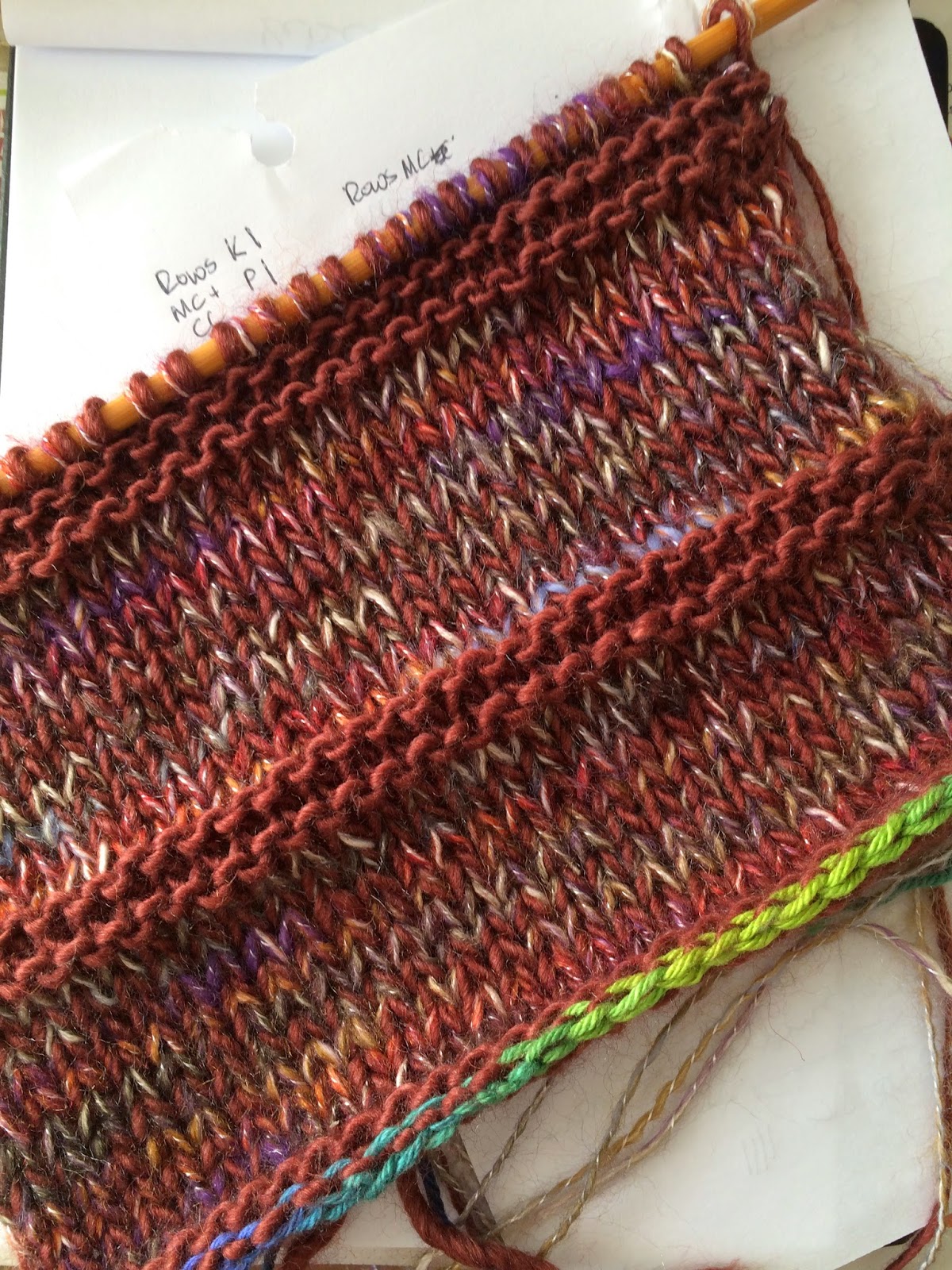I had been researching alpaca because I have been working with some beautiful yarn made of that fleece and I'm loving how it feels: soft and bouncy. I discovered there are a lot of alpaca farms are here in Canada, including many here in southern Ontario. That's how I stumbled upon Amazing Graze Alpacas in Stirling, Ontario. Shelagh and I had "Liked" their Facebook page, so when farm owner Marj Brady posted about their open house and the weather man said the weekend would be warm and sunny, Shelagh I decided to visit the farm.
So this past Saturday, we headed out. It was gorgeous! A perfect day for a drive; and we took the scenic route along the Trent River. Most of our directions (from an online map) were good, and we only got lost in the centre of Stirling (we don't think County Rd. 14 was clearly marked at the corner
of the three main roads, at least, that's our story). But we got to the farm and were thrilled to see the beautiful alpacas grazing around the land.
Co-owner Steven told us about their farm. He explained that their animals are sheared once a year and told us about some of the care they give: toenail clipping, teeth checking. He also relieved me of some of my own misconceptions: alpacas are not pack animals, although llamas are. In their native countries they are bred for their fleece because it is much softer than llama (or sheep) fleece.
Marj and Steven appear to be typical of what I've read about alpaca farmers in general. Their respect for and genuine pleasure they get in caring for their alpacas shines through. Check their website (http://www.amazinggrazealpacas.ca) to learn their alpaca's names and get a sense of their personalities.
Steven also introduced us to the two young males in a pen: Zodiac and Jupiter. They are so beautiful with lovely big eyes beneath their curly "Beatle cuts," as Shelagh called them.
 |
| Zodiac (foreground) and Jupiter calmly survey the visitors. |
 |
| Award winning alpacas and fleece are turned into these beautiful yarns, felt balls, and other finished products, such as shawls and scarves. Everything is locally produced. |
So, why alpaca? How does alpaca fleece compare to wool? Here are some interesting facts about alpaca fibres:
- There are two main types of alpacas: Huacaya and Suris. The former is more common and more commonly raised/bred and its fleece is thick and dense, and grows vertically from the body giving it a very woolly appearance. Huacaya's also have a very crimpy fleece and a fine micron (micron = 1/1000 millimeter). The smaller the number, the finer the micron and a fine micron is sought after for luxurious high fashion garments.
 |
| Shelagh checks out a beautiful alpaca fleece. |
- Alpacas do not produce the lanolin that sheep do, so processing of the fibres is much easier on the environment. Add that to the fact that alpacas are raised organically to make this a truly eco-friendly fibre. Lack of lanolin also means that people allergic lanolin or sensitive to sheep's wool may comfortably wear alpaca.
- Alpaca fibre has good thermal capabilities, so it's perfect for our Canadian (or northern U.S. and northern European) winters.






